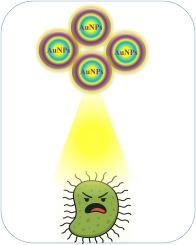基于aunp的致病菌比色和荧光传感器研究进展(2015-2025)
IF 4.2
3区 工程技术
Q2 CHEMISTRY, APPLIED
引用次数: 0
摘要
致病菌是多种传染病的罪魁祸首,对公众健康、食品安全和环境卫生构成严重威胁。快速和准确地检测这些微生物对于预防疾病暴发和确保有效监测至关重要。传统的检测方法通常耗时,需要专门的设备,并且需要熟练的人员,因此不太适合现场和实时应用。为了克服这些限制,比色和荧光传感器由于其简单、高灵敏度和快速视觉或基于荧光的信号产生的潜力而成为有效的替代方案。其中,基于金纳米颗粒(AuNP)的传感器因其独特的光学特性、易于表面功能化和强大的信号放大能力而备受关注。这些传感器允许比色和荧光检测模式,提供双重功能,以提高致病菌的识别精度。AuNPs表现出局部表面等离子体共振(LSPR),这有利于聚集时颜色的变化,也使荧光增强或猝灭,使其适用于广泛的传感平台。本文综述了2015年至2025年基于aunp的细菌检测比色和荧光传感器的研究进展。本文重点介绍了这些传感系统的最新进展、设计策略和实际应用,强调了它们在提高灵敏度和使便携、具有成本效益的诊断工具用于临床、食品安全和环境监测方面的作用。本文章由计算机程序翻译,如有差异,请以英文原文为准。

AuNP-based colorimetric and fluorometric sensors for detection of pathogenic bacteria: A review (2015–2025)
Pathogenic bacteria are responsible for a wide range of infectious diseases that pose serious threats to public health, food safety, and environmental hygiene. Rapid and accurate detection of these microorganisms is essential to prevent disease outbreaks and ensure effective monitoring. Conventional detection methods are often time-consuming, require specialized equipment, and demand skilled personnel, making them less suitable for on-site and real-time applications. To overcome these limitations, colorimetric and fluorometric sensors have emerged as effective alternatives due to their simplicity, high sensitivity, and potential for rapid visual or fluorescence-based signal generation. Among these, gold nanoparticles (AuNP)-based sensors have attracted significant attention because of their unique optical properties, ease of surface functionalization, and strong signal amplification capabilities. These sensors allow both colorimetric and fluorometric detection modes, offering dual-functionality for the recognition of pathogenic bacteria with enhanced precision. AuNPs exhibit localized surface plasmon resonance (LSPR), which facilitates color changes upon aggregation, and also enable fluorescence enhancement or quenching, making them suitable for a wide range of sensing platforms. This review aims to provide a comprehensive overview of the progress made from 2015 to 2025 in the development of AuNP-based colorimetric and fluorometric sensors for the detection of bacteria. The article highlights the recent advancements, design strategies, and practical applications of these sensing systems, emphasizing their role in improving sensitivity and enabling portable, cost-effective diagnostic tools for clinical, food safety, and environmental monitoring purposes.
求助全文
通过发布文献求助,成功后即可免费获取论文全文。
去求助
来源期刊

Dyes and Pigments
工程技术-材料科学:纺织
CiteScore
8.20
自引率
13.30%
发文量
933
审稿时长
33 days
期刊介绍:
Dyes and Pigments covers the scientific and technical aspects of the chemistry and physics of dyes, pigments and their intermediates. Emphasis is placed on the properties of the colouring matters themselves rather than on their applications or the system in which they may be applied.
Thus the journal accepts research and review papers on the synthesis of dyes, pigments and intermediates, their physical or chemical properties, e.g. spectroscopic, surface, solution or solid state characteristics, the physical aspects of their preparation, e.g. precipitation, nucleation and growth, crystal formation, liquid crystalline characteristics, their photochemical, ecological or biological properties and the relationship between colour and chemical constitution. However, papers are considered which deal with the more fundamental aspects of colourant application and of the interactions of colourants with substrates or media.
The journal will interest a wide variety of workers in a range of disciplines whose work involves dyes, pigments and their intermediates, and provides a platform for investigators with common interests but diverse fields of activity such as cosmetics, reprographics, dye and pigment synthesis, medical research, polymers, etc.
 求助内容:
求助内容: 应助结果提醒方式:
应助结果提醒方式:


